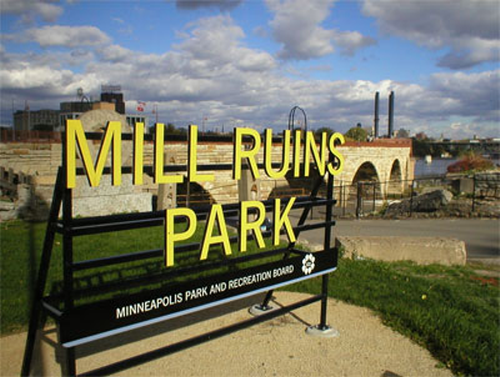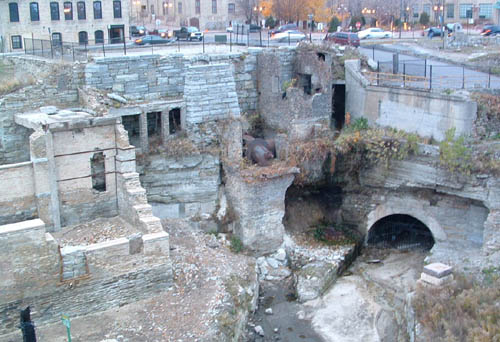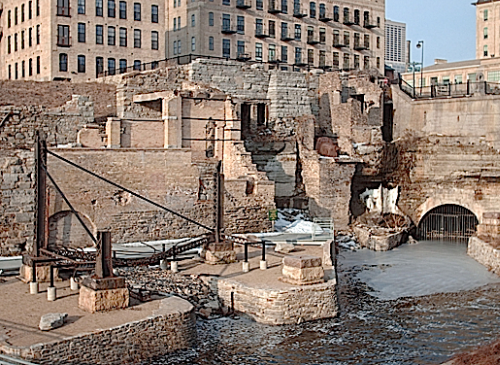Mill Ruins Park

As the centerpiece of the revitalization of Minneapolis' historic West Side Milling District, Mill Ruins Park combines an exploration of the history of Minneapolis with present day activities for all ages.
In its 19th-century heyday, this area of mills, canals, tailraces and other historic resources comprised the largest direct-drive water-powered facility in the world and was the leading international producer of flour, a commodity which was shipped both nationwide and worldwide.

This industrial powerhouse was the catalyst for the development of Minneapolis and the birthplace of a number of companies which remain significant to this day, including General Mills, Pillsbury, Washburn Crosby (WCCO), and Xcel Energy. Mill Ruins Park lies within the St. Anthony Falls Historic District, listed on the National Register of Historic Places; and directly adjacent to the 1883 Stone Arch Bridge, a National Historic Engineering Landmark constructed to connect Midwestern farmers and their crops of wheat to the booming flour production mills.

The park tells this story through the now exposed historic walls and waterpower features long buried beneath many feet of sand and gravel. With the reopening of the historic tailrace canal, which carried water from the mill turbines back to the river, visitors have the opportunity to interact directly with an exciting water feature.
The park is located on the west bank of the Mississippi River in downtown Minneapolis and is adjacent to St. Anthony Falls and the Stone Arch Bridge. It features the historic mill ruins, biking and walking paths, landscaping, raised catwalks, interpretive signs to provide information and guide visitors as they explore the river, and spectacular views of the falls and the Stone Arch Bridge. Guided programs and tours are also available.
 Parks
Parks